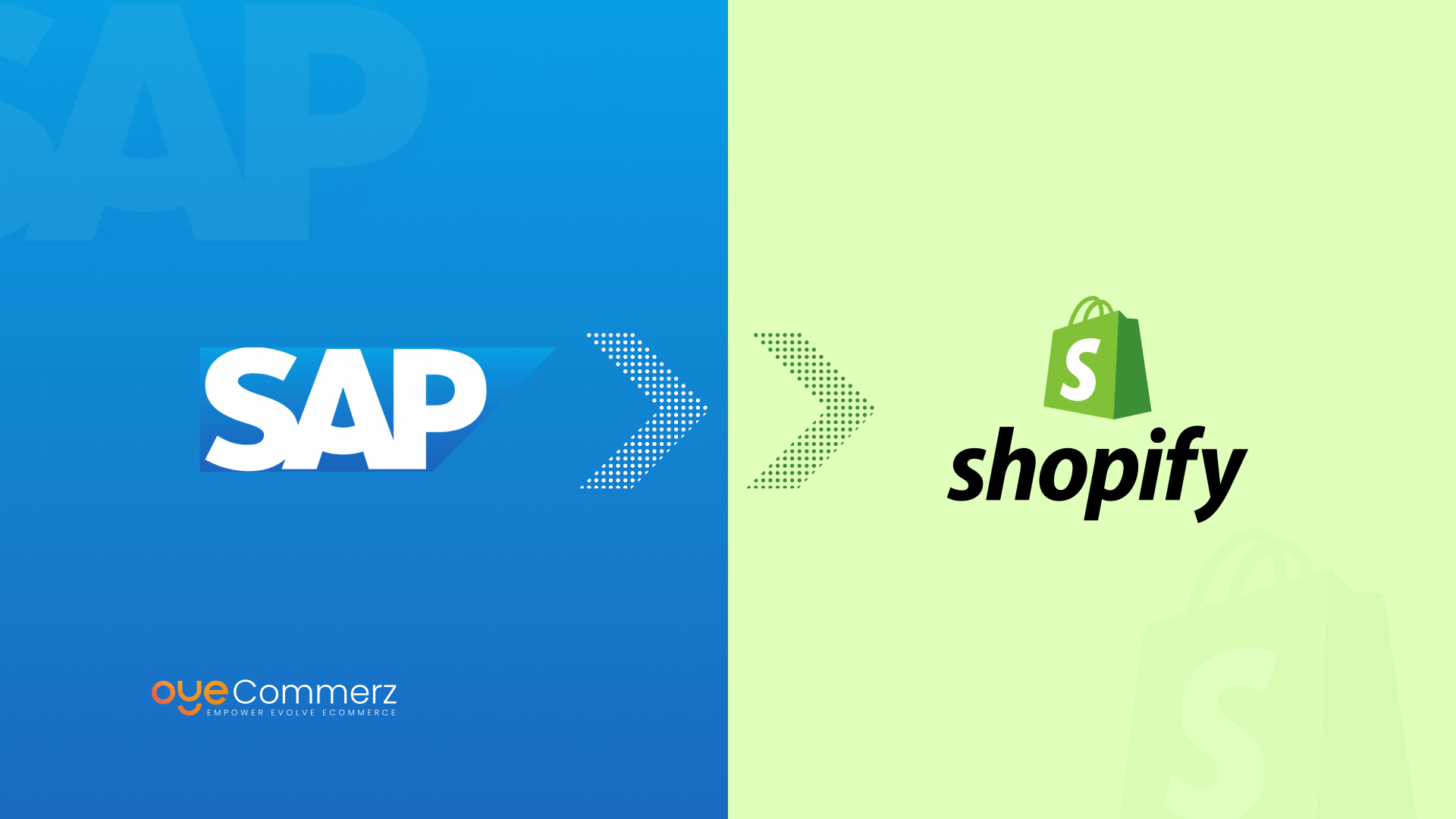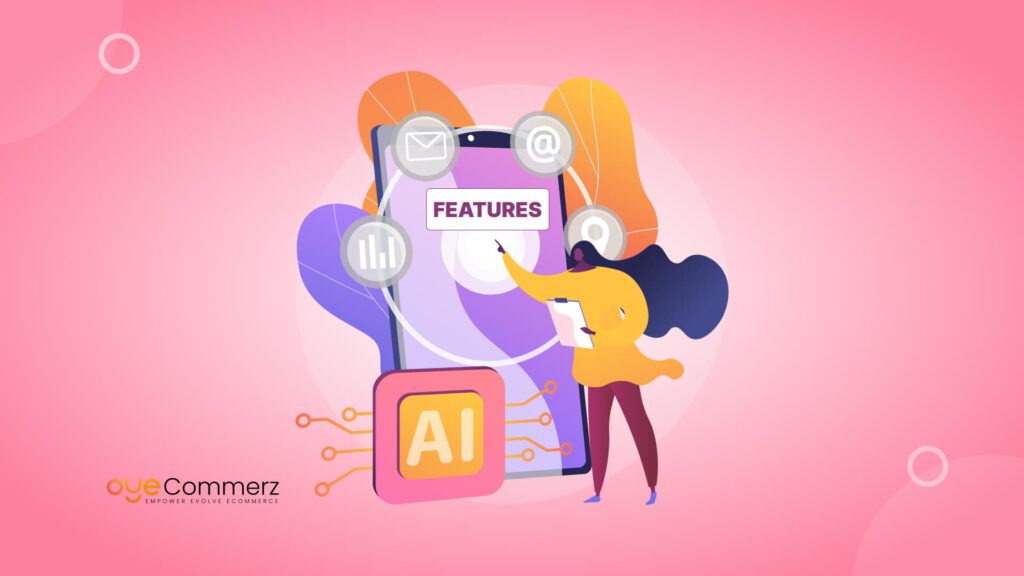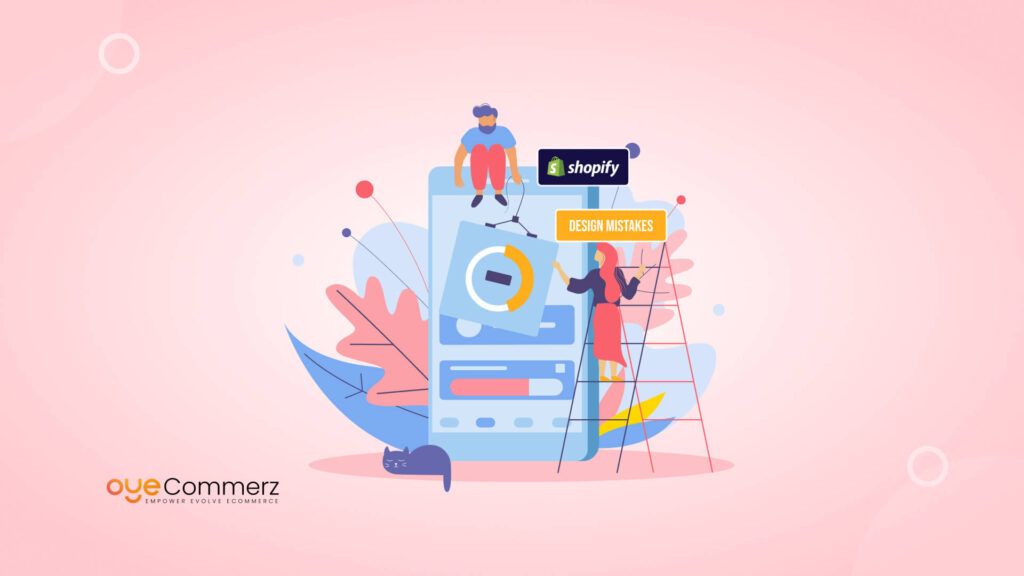Are you a business owner tired of dealing with the complexities of SAP Commerce Cloud? Switching to Shopify could be the smooth, scalable solution you’ve been looking for. Did you know businesses migrating to Shopify often see a 30% increase in operational efficiency within months? This guide is here to make the process simple, clear, and hassle-free. We’ll walk you through every step, ensuring a seamless transition while keeping downtime to a minimum. Whether you’re chasing faster growth, easier management, or cost-effective solutions, this comprehensive guide will help you unlock Shopify’s full potential and set your business on the path to success. Let’s make your migration journey effortless and rewarding!
Table of Contents
ToggleKey Differences Between SAP Commerce Cloud & Shopify
When migrating from one platform to another as is the case with SAP Commerce Cloud to Shopify there are key areas of understanding regarding the two platforms. Every system has its advantages, and knowing these is important when planning a migration.
1. Enterprise Capabilities
SAP Commerce Cloud includes flexibility of operation, complex requirements for large businesses, and the use of a cloud system. These are multi-seller, multi-option selling, B2B configurable option, and large-scale selling across geographies and markets. However, it entails substantial development and maintenance capitals which make it rigid particularly when selecting new strategies for adaptation by the enterprise.
Shopify on the other hand is an open source cloud integrated platform that is almost easy to implement and is flexible. When it started, Shopify was more appropriate for SMBs, but it also has grown into addressing enterprise requirements. Shopify has a simple easy-to-navigate user interface that enables businesses to handle their stores more effectively while using its app store provides even more capabilities with little coding.
2. Customization vs. Simplicity
SAP Commerce Cloud offers a great level of flexibility and with it, organizations can easily accommodate and manage almost any business needs concerning the e-commerce site. However, these often require highly skilled developers due to the nature involved, and often take longer to deploy due to their nature.
Shopify is even better when it comes to the reduction of the level of complex development. There are so many themes and connections pre-stored that one can get many things done without quite as much complication. Shopify’s app ecosystem supports this even further and allows for easy implementation of new features and functions without having to write lines of code.
3. Hosting and Scalability
SAP Commerce Cloud usually needs to be installed locally or through SAP hosting, which means a lot of IT work and effort. Shopify works in a cloud-based environment only, and all functions scale according to the company’s requirements seamlessly without worrying about physical hardware and management. This scalability contributes to solving one of the most critical purposes that businesses with high growth intend when choosing a platform: minimizing IT burden.
Why Businesses Are Migrating from SAP Commerce Cloud to Shopify
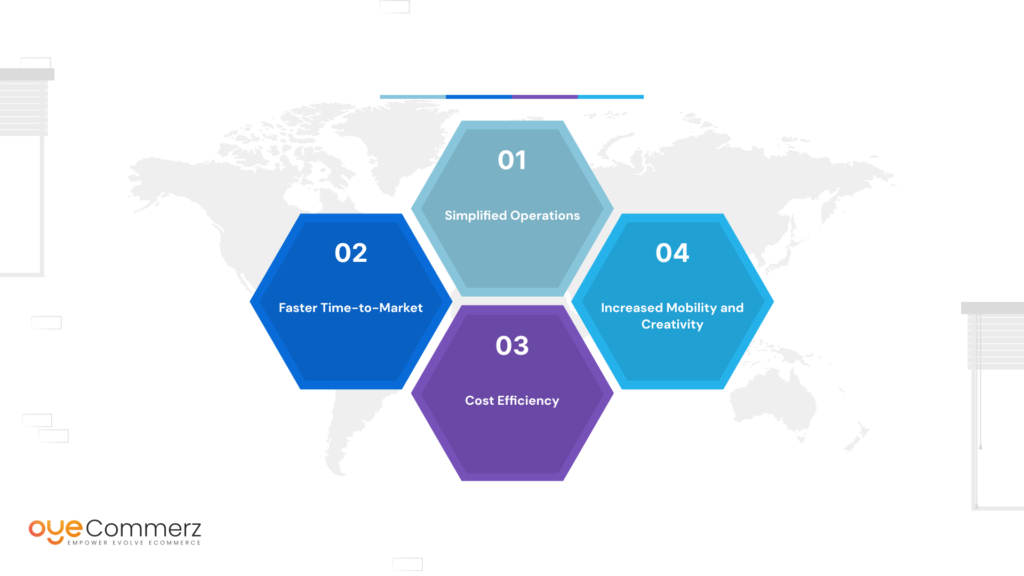
The operation and the financial advantages are the key factors that force the transition from SAP Commerce Cloud to Shopify. Here are the primary reasons businesses are making the switch:
1. Simplified Operations
The management of a big e-commerce store on SAP Commerce Cloud is quite costly and time-consuming. When it comes to the development and subsequent maintenance, the IT teams are constantly required by the platform. Shopify reduces most of this confusion as they avail platforms that are easy to navigate and maintain. Shopify’s cloud-based platform eliminates the necessity to spend the company’s resources on making infrastructure improvements; the collaborative teams can concentrate on the company’s growth instead of facing infrastructure challenges.
2. Faster Time-to-Market
A business today requires simple to shift to new paradigms that prevail in the market. Combined with its ease of use, the theme and app store allows for the creation of new capabilities or even a new store in a fraction of the time of what would be possible on SAP Commerce Cloud. Thus, dealing with great variability is essential for companies willing to maintain their competitive advantage in volatile markets.
3. Cost Efficiency
However, the cost aspect like development, customization, or even, hosting of the SAP Commerce Cloud is relatively expensive for many companies. Shopify has more fixed pricing solutions, and fewer expenses concerned with hardware and software development. Marketing managers and product developers can get larger chunks of the company’s budget because more certainty is created by financial predictability.
4. Increased Mobility and Creativity
An important benefit that only belongs to Shopify is the great variety of apps that can help businesses advance. Thousands of application templates make it possible for organizations to quickly infuse new value-added services such as marketing automation, customer service, and inventory control features. SAP Commerce Cloud also has the benefit of being highly customizable, yet simply cannot compete with Shopify’s app marketplace for speed and ease of extension.
SAP Commerce Cloud to Shopify: A Step-by-Step Guide
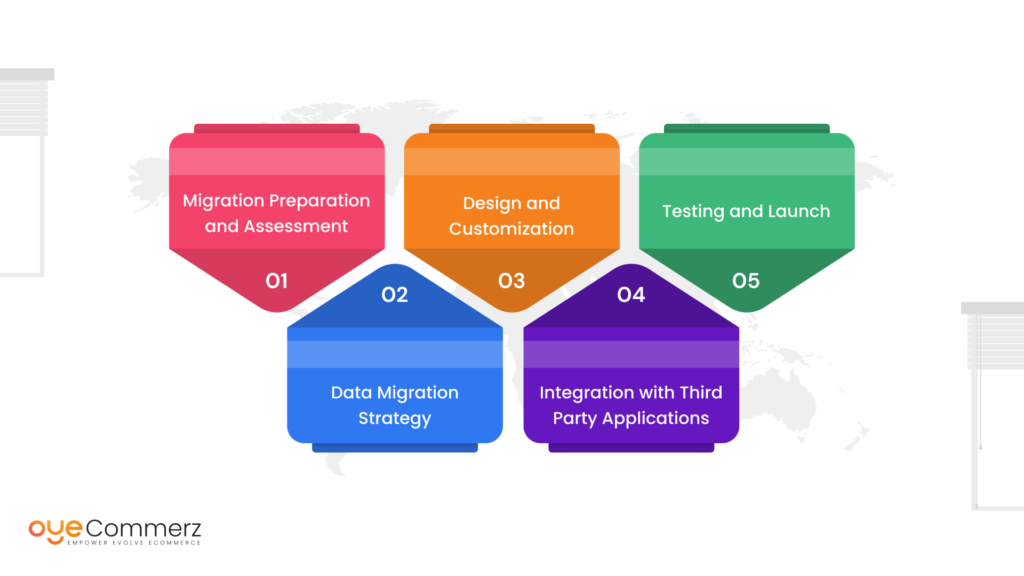
Transitioning from SAP Commerce Cloud to Shopify involves several steps that should be well understood to avoid problems during the process. Here’s a step-by-step guide to ensure a smooth transition:
1. Migration Preparation and Assessment
SAP Commerce Cloud store should be audited before starting the migration process of your store. Determine all the possible data, such as product catalogs, customers, orders, SEO settings, and specific features. This audit will assist you in understanding the kind of data that has to be migrated while the remaining information should be deleted or omitted.
2. Data Migration Strategy
Information is fundamental to any e-business organization. It is therefore advisable to seek help from your development team or a migration specialist to come up with a migration plan. Fortunately, Shopify supports API for importing product data, and customer records as well as historical orders have to be imported with caution to avoid issues of data integrity. The testing should be performed in phases in order not to have the loss of critical data during the migration process.
3. Design and Customization
Redesigning your store front-end on Shopify is a good chance to update the site design. Choose a Shopify theme that you want in the representation of your company and make adjustments, if necessary. If your store utilizes SAP Commerce Cloud and has many modifications, consider what of that was important and in what ways they may be implemented or enhanced in Shopify with the use of apps or programming.
4. Integration with Third Party Applications
Another point in favor of Shopify is the availability of an extensive application store. During migration, it is necessary to establish which of the third-party integrations available in SAP Commerce Cloud have to be substituted with Shopify apps. Using the Shopify app, the applications that are traditionally integrated include payment gateways, inventory management systems, and marketing tools.
5. Testing and Launch
Afterward, the data migration, and the design selection, carry out extensive testing of the Shopify store. It involves the inspection of site speed and efficiency, payment options, and the path taken by the customer. After passing all the tests schedule a go-live date and make sure to let your customers know in advance to avoid inconveniences.
Also Read: Key Benefits of Migrating from SAP Commerce Cloud to Shopify for Enterprises
Post-Migration Maintenance and Support
Momentum for migration does not stop at the time of going live. After migration, constant support and maintenance are required to keep the platform steady and serve your Shopify store. Simply check the site for effectiveness and you look for problems that you may have to fix, it is also good to always maximize the upgrade of Shopify for better functionality of the site.
1. Data Monitoring Continuously: Even though auditing the data at regular intervals will ensure all the customer data, orders, and inventory are accurate, the process can be supported with such tools that alert for early discrepancies.
2. Security and Compliance: Shopify is PCI-DSS compliant and offers a lot of security features, but businesses need to add measures like two-factor authentication and regular security checks to ensure safety while dealing with customer data.
3. Customer Support and Feedback: Use Shopify’s integrated tools and third-party apps to monitor customer feedback regarding the issues they are experiencing, and address these issues. Continuous improvement through user feedback is the key to maintaining loyalty in customers after migration.
Common Challenges During Migration and How to Overcome Them
1. Data Loss or Corruption
In the migration process, some of the biggest apprehensions are about data integrity. To steer clear of this, test data transfer at every stage completely. Use Shopify’s API to auto-transfer your data and sync all relevant info.
2. Customization Gaps
SAP Commerce Cloud won’t have direct equivalents to every custom function. Custom development or third-party apps usually solve this problem.
3. SEO Retention
Migrating can cause SEO disruption if not handled right. Work with experts in SEO to set up important SEO settings, including redirects and metadata, in the Shopify store.
Benefits of Moving to Shopify for the Long Term
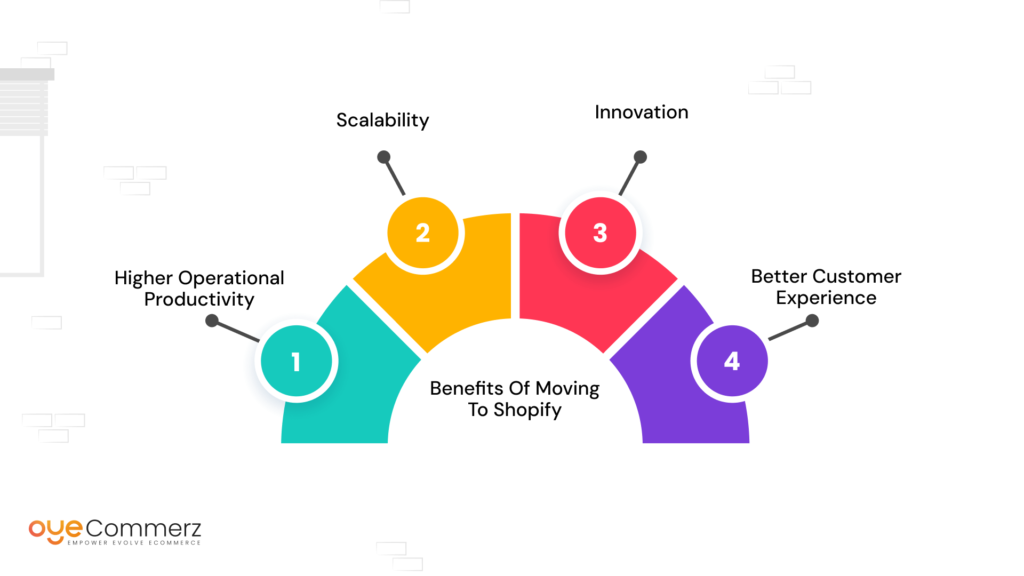
Although the process seems quite onerous, companies that take this measure enjoy great long-term benefits. The business sees:
- Higher Operational Productivity: With lower IT overhead and streamlined workflows, companies can focus on growth.
- Scalability: Shopify Cloud automatically scales with your business.
- Innovation: The huge application marketplace enables rapid feature extension and assimilation of new technologies.
- Better Customer Experience: Shopify’s easy-to-use interface and seamless checkout result in higher customer satisfaction and retention.
Simplify Your Migration with OyeCommerz!
Migrating from SAP Commerce Cloud to Shopify can be complex, but with OyeCommerz, you don’t have to navigate it alone. Our expert team specializes in seamless migrations, ensuring data integrity, preserving your SEO rankings, and replicating custom functionalities. We handle every step, from planning to post-migration support, so you can focus on growing your business.
Contact with OyeCommerz for smarter, more efficient Shopify marketing today.
Contact to Migrate your Site to Shopify Now
Conclusion
This would be the strategic leap for your company, and switching from SAP Commerce Cloud to Shopify can result in better scalability, efficiency, and innovative potential for the business. A well-planned migration process, an understanding of typical challenges, and a strategic focus on long-term advantages will help businesses make a smooth transition to a more dynamic and future-proof platform. Shopify is growing into a great solution for all sorts of enterprises eager to perform in an ever-changing e-commerce.

